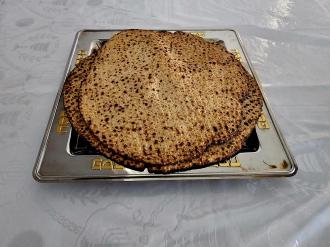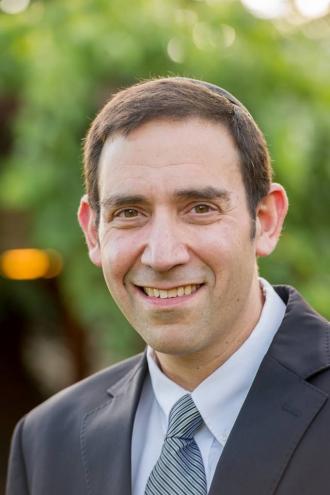Ashkenazim and Sefardim recite very different kinos on Tisha B’Av and different piyutim on most other occasions. This provides an opportunity to discuss:
Poetic Controversies
Question #1: How many machzorim?
“I am a Sefardiyah by birth, and recently became engaged to a wonderful Ashkenazi man who gave me a beautiful, five-volume set of machzorim. I looked at my new set of machzorim and could not find the selichot recited in Elul anywhere in the Rosh Hashanah machzor, nor in any of the other volumes. Where will I find them? I also could not find any volume for Tisha B’Av, but I also could not find those prayers in the Ashkenazi siddur my chatan bought me.”
Question #2: The Italian connection
“Why are so many of our piyutim written by Italian authors?”
Introduction:
Our prayers have been enhanced by the inclusion of many religious poems written by various authors over the years. During the yomim nora’im, virtually every Jewish community recites piyutim, poetic liturgy, as part of the davening. We also prepare for Rosh Hashanah and Yom Kippur with the recital of selichos, which also includes piyutim. Such famous and standard prayers as Yigdal, Adon Olam, and An’im Zemiros all qualify as piyutim. The zemiros that we sing at our Shabbos meals are also piyutim, as is Dvei Haseir, written by Dunash, recited prior to bensching at a wedding or sheva brachos, and Yom Le’yabasha, written by Rav Yehudah Halevi, that is chanted at a seudas bris. And do you know of a community that does not begin Shabbos by singing Lecha Dodi, written by Rav Shlomoh Alkabetz?
At one time, in Ashkenazic circles, the davening of all the yomim tovim, all special Shabbosos, and even Purim and Tisha B’Av was graced with piyutim specially suited to the occasion. The themes, history and emotions of each season and special day were expressed through these beautiful writings.
In the last generation, the recital of piyutim is definitely on the downswing. When I was young, during the birchos kerias shema of maariv on Pesach, Sukkos and Shavuos, most shullen recited piyutim, a custom that is in most places not observed today. About the only shullen where I hear this being practiced today are chassidishe minyanim or those following the nusach Ashkenaz traditions of the old German communities.
In the yeshivish world, what is left over from our long tradition of these piyutim are the zemiros of Shabbos, the piyutim recited during yomim nora’im, the kinos, and the selichos.
One interesting exception that has survived is the recital of Akdamus at the beginning of kerias haTorah on Shavuos, which is still recited in every Ashkenazi shul I have ever attended. (Sefardim do not recite Akdamus, as I will soon explain.)
Kinos versus selichos
Since I mentioned the remaining use of piyutim for both selichos and kinos, it is interesting to note a difference between the selichos and the kinos of Tisha B’Av. Although the same basic structure of selichos is followed by most Ashkenazic communities, different practices developed concerning which selichos are recited on which days and in what order. The differences are significant enough so as to make it necessary to make sure that one has a copy of the selichos that follows the exact minhag followed by the shul that one is attending.
On the other hand, with very slight differences, the same kinos for Tisha B’Av are recited virtually universally by all the different communities of Ashkenaz.
Ashkenazim and Sefardim
I once attended Rosh Hashanah davening with a Sefardic minyan, and I can advise someone doing this to have a Sefardic machzor handy, which I did not. Although many different customs have developed among various Ashkenazic communities, the same sources and the same style of piyutim are used by all. However, the piyutim recited by the Sefardim are completely different. Very few of the piyutim recited by Sefardim are familiar to Ashkenazim and vice versa. For example, the writings of the Italian school of paytanim (authors of piyutim) who figure so significantly among the Ashkenazim are never part of the Sefardic prayer. Similarly, Rav Elazar Hakalir, who figures so predominantly in the Ashkenazim’s prayer, is not used by the Sefardim. Most of their piyutim are of relatively late vintage and from four authors. The predominant paytanim used by the Sefardim are Rav Shelomoh ibn Gabirol, Rav Yehudah Halevi, Rav Moshe ibn Ezra and Rav Avraham ibn Ezra, all of the Spanish school of talmidei chachamim.
It is also interesting to note that in the Sefardic custom, fewer piyutim are recited, which is surprising, since the Jews of medieval Spain were far more noted for their poetry than were the Ashkenazim. Still, Sefardim recite piyutim as part of the selichos, during Rosh Hashanah and Yom Kippur davening and on Tisha B’Av, which Ashkenazim call the reciting of kinos. By the way, although Sefardim say far less piyutim than Ashkenazim, they do say selichos after all five tefilos on Yom Kippur as well as piyutim before kedusha.
How many machzorim?
At this point, we can address one of our opening questions.
“I am a Sefardiyah by birth, and recently became engaged to a wonderful Ashkenazi man who gave me a beautiful, five-volume set of machzorim. I looked at my new set of machzorim and could not find the selichot recited in Elul anywhere in the Rosh Hashanah machzor, nor in any of the other volumes. Where will I find it? I also could not find any volume for Tisha B’Av, but I also could not find this in the Ashkenazi siddur my chatan bought me.”
The answer to this question is interesting. In the customs of bnei Ashkenaz, every day’s selichos is completely different from every other day. Although the Sefardim recite selichos the entire month of Elul, they have no separate selichos book. This is because they recite the same selichos every day, and the selichos are usually included in their Rosh Hashanah machzor. A Sefardi set of machzorim might include three volumes: one for Rosh Hashanah, one for Yom Kippur and one for Tisha B’Av. Since they do not recite piyutim on the other holidays, the printers did not always find it worthwhile to produce machzorim for those days, since a standard siddur and chumash suffice. Others include a fourth volume, which is for all three regalim.
On the other hand, when a publisher sells an Ashkenazic set of machzorim, he includes a volume for each Yom Tov because each Yom Tov had its own special piyutim. However, the selichos recited on fast days, during Elul and aseres yemei teshuvah, and the kinos recited on Tisha B’Av are not included in a set of machzorim and are sold as separate volumes.
History through piyutim
There is a tremendous amount of history that can be derived from learning about the authors of our piyutim. We get quite an education as we see where the wandering Jew has found himself over the centuries of our dispersal. Here is a sampling of the names and geographic areas of some of our predominant paytanim, organized according to the periods of history. In all likelihood, many of our more common piyutim predate even the earliest dates I have mentioned here. However, since we are without any means of dating them, I have omitted them.
Bavel
Some of our piyutim are known to date back to the era of the geonim 1200-1300 years ago. Among the authors of this period we find Rav Sa'adia Gaon, Rav Nissim Gaon, and Rav Amram Gaon.
The early Italians
Not long after the period of the geonim that I just mentioned, there was a period of significant production of piyutim that dates back to the late 9th century in Italy. Among the many Italian paytanim of this era whose works we recite are a grandfather and grandson both named Amitai, Shefatyah, who was the son of one Amitai and the father of the other, Zevadyah, and Rav Shlomoh Habavli. (Historians do not know for certain why he was called Habavli, since he lived in Italy. The most obvious explanation is that either he was originally from Bavel or that his family origins were there. This would be similar to someone with obvious German roots carrying the family name Pollack, or someone of eastern European background with a family name of a central or western European city, such as Shapiro, from the city Speyer in western Germany, because of some earlier family history.)
Early Ashkenaz
The word Ashkenaz is associated with Germany, and the historical origins of these practices are usually traced to the Jewish communities that lived a thousand years ago in the Rhine river valley. The most famous three of these communities were Speyer, Worms and Mainz. Many of our piyutim are authored by gedolim of this period, including Rabbeinu Gershom, Rabbi Shimon Hagadol of Mainz and Rav Meir ben Yitzchak, the chazzan of Worms, who was the author of Akdamus. By the way, this will explain why Sefardim do not recite Akdamus on Shavuos, since its author lived after the time that Sefardim and Ashkenazim were physically separated into different areas.
Spanish
Beginning around this era is the Golden Age of Spain, which included much writing of piyutim. The major body of the attributable piyutim recited by the Sefardim goes back to this period, most of it written by Rav Shlomo ibn Gabirol, Rav Yehudah Halevi, Rav Moshe ibn Ezra, and Rav Avraham ibn Ezra, as I noted above. Ashkenazim do recite some piyutim from these authors, for example, Shomron Kol Titein, recited in the kinos of Tisha B’Av, authored by ibn Gabirol, and Tziyon halo Sish’ali, also one of the kinos, and the above-mentioned Yom Le’yabasha by Rav Yehudah Halevi, recited commonly at a bris. By the way, you will find Yom Le’yabasha in your Ashkenazi machzor for Pesach, where it exists as the piyut to be recited at shacharis of the seventh day of Pesach, immediately before the brocha of Ga’al Yisroel.
Later Ashkenaz
In this era, many of the piyutim were written by rishonim who are familiar to us from their halachic and Talmudic writings. These include several baalei Tosafos, such as the Rivam (Rashi’s grandson and the older brother of Rabbeinu Tam), Rav Elchanan, Rav Yehudah Hachasid, Rav Yitzchak Ohr Zarua, the Maharam, Rav Yosef Bechor Shor, Rav Yoel Halevi (the father of the Ra’avyah).
The Italian angle
Having studied a quick overview of the various places where our paytanim lived, we can now explain why Ashkenazim recite many selichos and other piyutim written by the early Italian paytanim, whereas the Sefardim do not recite piyutim from these authors. The answer is that the ancestors of what came to be called Ashkenazic Jewry probably predominantly migrated northward from Italy, bringing with them their customs and their piyutim that had been written during this early golden age of piyut.
Rav Elazar Hakalir
No discussion of piyutim is complete without presenting Rav Elazar Hakalir, who authored the lion's share of the kinos we recite on Tisha B'Av, as well as many of our other piyutim, including Tefillas Tal and Tefillas Geshem, the piyutim for the four special Shabbosos (Shekalim, Zachor, Parah and Hachodesh), and many of the yotzros for Yomim Tovim. We know absolutely nothing about him personally — we cannot even date when he lived with any accuracy. Some Rishonim place him in the era of the Tanna’im, shortly after the destruction of the Beis Hamikdash, identifying him either as Rabbi Elazar ben Arach (Shu"t Harashba 1:469), a disciple of Rabbi Yochanan ben Zakai, or as Rabbi Shimon ben Yochai's son Elazar, who hid in the cave with his father (Tosafos, Chagigah 13a s.v. Veraglei; Rosh, Berachos 5:21; Shibbolei Haleket #28). On the other hand, others date Rav Elazar HaKalir hundreds of years later.
We do not know for certain what the name "Kalir" means. Since there are several places where he used the acronym "Elazar berabi Kalir," it seems that his father's name was Kalir. However, the Aruch explains that "kalir" means a type of cookie, and that he was called hakalir because he ate a cookie upon which had been written a special formula that blessed him with tremendous erudition (Aruch, eirech Kalar III).
Many of Rabbi Elazar Hakalir's piyutim and kinos require studying rather than reading, since they rely on allusions to midrashim and historical events. Many commentators elucidated his works, attempting to illuminate the depths of his words. Often, his ideas are expressed in difficult allusions, and the story or midrash to which he hints is unclear or obscure. They certainly cannot be understood without careful preparation. Someone who takes the trouble to do this will be awed by the beauty of the thoughts and allusions.
When did he live?
Most assume that Rav Elazar HaKalir lived in Eretz Yisrael, based on the fact that we have no piyutim written by him for the second day of Yom Tov (Tosafos, Chagigah 13a s.v. Veraglei; Rosh, Berachos 5:21.) However, the yotzros of the second day of Sukkos clearly include Rav Kalir’s signature and follow his style. Could it be that Diaspora Jews moved yotzros he wrote for the first day of Yom Tov to the second day? This approach creates another question: Since the yotzros recited on the first day of Yom Tov were also written by him, would he have written two sets of yotzros for Shacharis on Sukkos? There are other indications that he did, indeed, sometimes write more than one set of piyutim for the same day, and this approach is followed by the Shibbolei Haleket (#28).
Kalirian controversy
Notwithstanding the brilliance and prevalence of Rav Kalir's piyutim, reciting them was not without controversy. No less a gadol than the Ibn Ezra stridently opposes using Rav Kalir's works. In an essay incorporated in his commentary to Koheles (5:1), the ibn Ezra levels extremely harsh criticism of the piyutim authored by Rav Kalir. He divides the nature of his arguments into four headings.
Simplicity of language
Ibn Ezra notes that prayers should be recited in simple language that can be understood on a very basic level. After all, the goal of prayer is to understand what one is saying. Since piyutim are usually intended to be forms of prayer, one should not recite any prayer whose intent is not obviously clear. Because of this criticism, Ibn Ezra advises reciting the piyutim written by Rav Sa’adia Gaon, which are written so that they can be understood in a very literal way.
Mixed language
Ibn Ezra’s second criticism of Kalir is that he mixed into the Hebrew of his piyutim vocabulary whose basis is in the Gemara, treating Talmudic language on the same level of Hebrew as that of Tanach. As Ibn Ezra notes, the Gemara says loshon mikra lechud uloshon Talmud lechud, which he understands to mean that the Hebrew used by the Gemara should be treated as a different language from that of Tanach. Therefore, one should not mix the two languages together when reciting prayers.
Grammatical creativity
The third criticism of ibn Ezra is that he is unhappy with Kalir’s creative approach to Hebrew grammar and structure, allowing poetic style to influence the Hebrew that he used. Ibn Ezra also criticized Kalir’s creation of new words by changing masculine words to feminine and vice versa for poetic effect or to accomplish his allusions.
Use of midrashim
Ibn Ezra’s fourth criticism of Kalir is that his piyutim are filled with midrashim, and that these should not be included in one’s prayers.
Ibn Ezra notes that there were those who took issue with his criticisms, since Kalir had passed on many years before and would be unable to respond. Ibn Ezra himself dispenses with this disapproval by noting that prayer must be whole-hearted, and how can one pray when one does not understand what one is saying? Ibn Ezra notes that when Rav Sa’adia wrote piyutim, he steered clear of these four problems.
In fact, Sefardim do not recite piyutim of Rav Kalir, whereas among Ashkenazim, he is the single, most commonly used paytan.
Response to ibn Ezra
We should note that the Shibbolei Haleket saw this essay of the ibn Ezra and quoted selections from it, but he omitted any of the ibn Ezra’s criticism of Rav Kalir’s writings.
Furthermore, none of ibn Ezra’s criticisms should be taken as casting aspersion on Rav Elazar Hakalir's greatness. Shibbolei Haleket records that when Rabbi Elazar Hakalir wrote his poem Vechayos Asher Heinah Meruba’os (recited in the kedusha of musaf of Rosh Hashanah), the angels surrounded him with fire (quoted by the Magen Avraham at the beginning of Siman 68). Similarly, R’ Chaim Vital writes that his teacher, the Arizal, recited only the piyutim written by the early paytanim, such as R’ Elazar Hakalir, since they are based on kabbalah.
Which seder ha’avodah?
This dispute between Ashkenazic practice and Sefardic manifests itself in the choice of piyut used for the seder ha’avodah recited towards the end of musaf on Yom Kippur. Dozens of piyutim explaining the seder ha’avodah were written, some dating back to the time of the Gemara, some perhaps earlier. Notwithstanding the antiquity of some of these pieces of poetry, the ones currently used are of relatively late origin. Ashkenazim recite Amitz Koach, which is highly poetic and difficult to understand. On the other hand, Sefardim recite Atah Konanta, which is written in clear Hebrew.
Conclusion
Now that we have had an opportunity to appreciate some of the background to our piyutim, it should motivate us to utilize our davening better to build a relationship with Hashem. As the Kuzari notes, every day should have three very high points -- the three times that we daven. We should gain our strength and inspiration for the rest of the day from these three prayers.

















